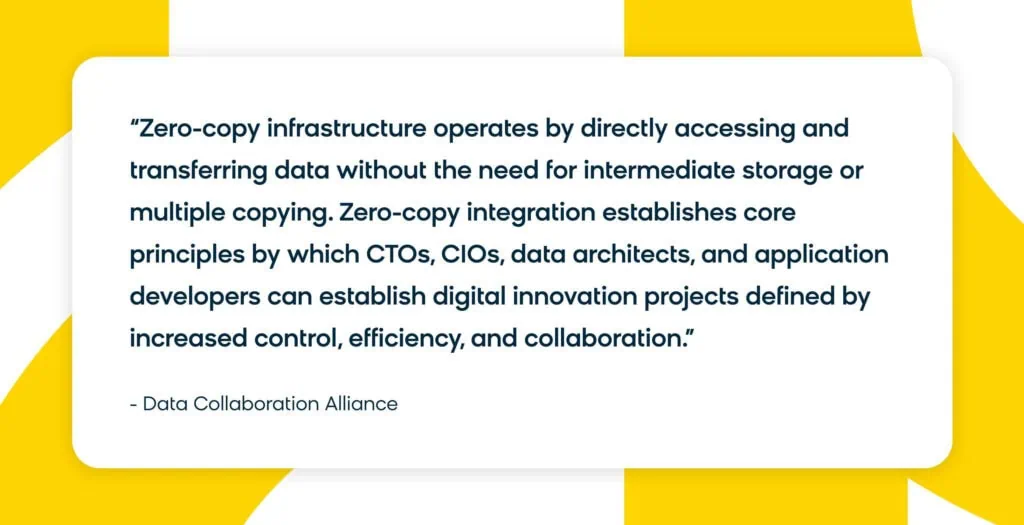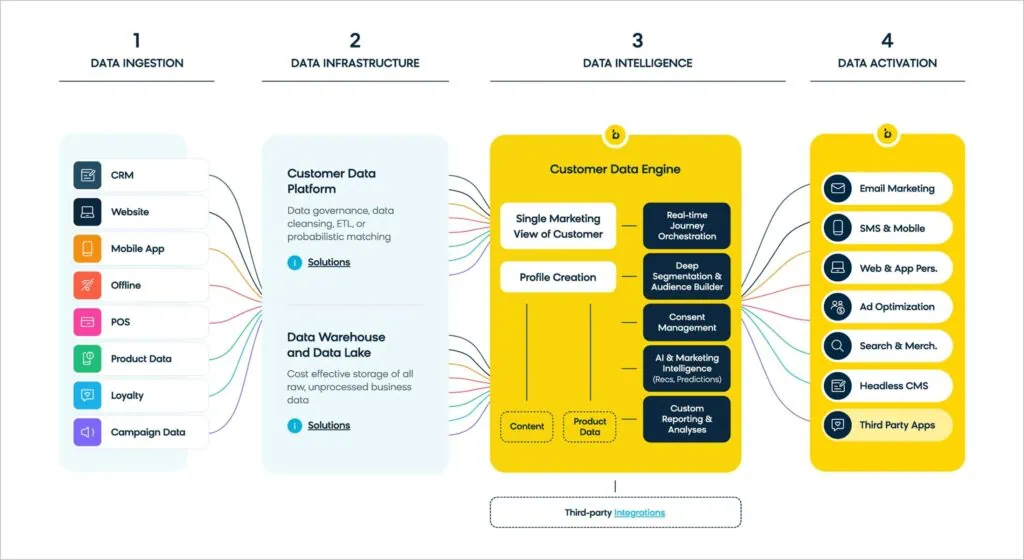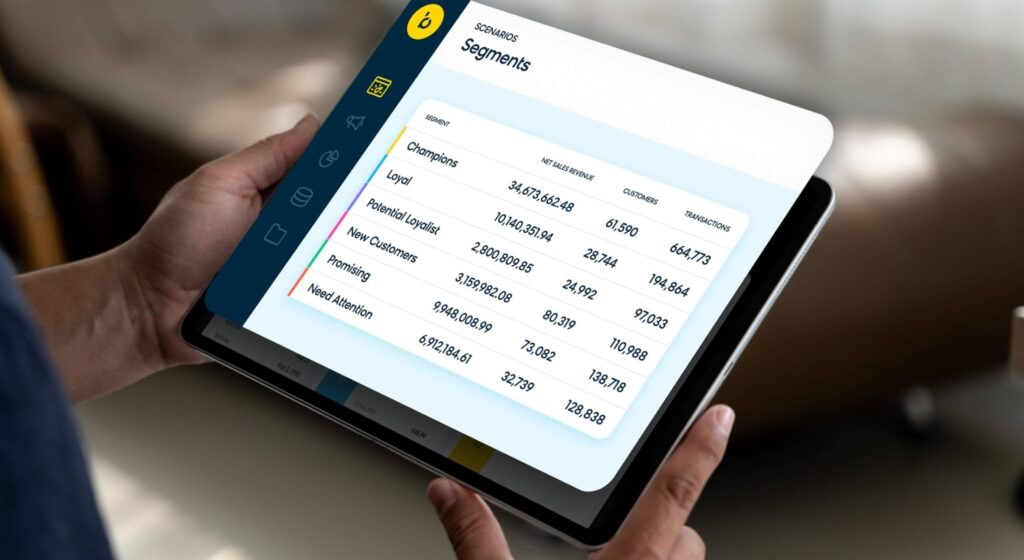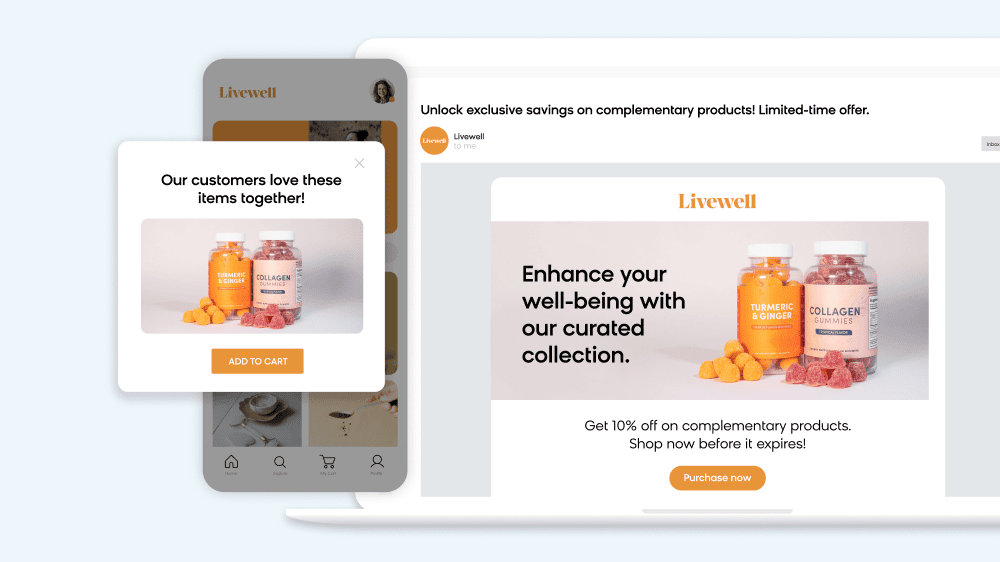In today’s data-driven business landscape, marketers need to leverage all the available data they can to help them run successful campaigns. To do this, they need to have at least a high level of knowledge of the company’s data architecture and how they can apply it to their activities.
Data warehouses have emerged as essential tools for organizations looking to make the most of their data. But what exactly is a data warehouse, and what role does it play in digital commerce? This post delves into the concept of a data warehouse and how it can help marketers achieve their business goals. We’ll explore the key differences between data warehouses and customer data platforms and why these tools are often used together.
Plus, you’ll discover how Bloomreach approaches data management and data warehouses to fuel strategic growth and improve business efficiency.
Data as a Priority for Marketing Leaders
The 2024 Nielsen Annual Marketing Report indicates that company leadership feels optimistic about their analytical capabilities, with 84% of global marketers expressing high confidence in their ROI measurement technology. However, only 38% measure holistic ROI across traditional and digital channels, revealing a gap in fully integrated analytics.
Moving forward, leaders are investing more in cross-channel and full-funnel analytics to bridge these gaps. This is because there’s a growing emphasis on digital channels and performance marketing for marketing teams (mainly for tracking conversions and optimizing spend across channels).
Additionally, just under half (49%) of marketers report offering a clear value exchange for customer data, highlighting concerns in data collection and utilization practices.
There are many approaches to data management, and they vary based on factors like industry, company size, or regional legislation. Platforms such as Bloomreach use different approaches to data management, and it’s important to understand which fits the best with your business needs. Later on, we’ll discuss Bloomreach’s approach to intelligent data management and how it helps businesses maximize data value and minimize data burden.

What Is a Data Warehouse?
A data warehouse (DWH) is a centralized repository where different types of data from various sources across an organization are stored and managed. It’s designed to support business intelligence (BI) activities, especially analytics and reporting, by consolidating and organizing data for easy querying and analysis. Here’s an overview of its key components and features:
- Data integration: A data warehouse brings together information from various sources, such as customer relationship management (CRM) systems, transactional databases, and other applications, using a process called ETL (extract, transform, load). This allows different types of data to be unified in one place, creating a complete view of the business.
- Historical data: While operational systems focus on real-time transactions, a data warehouse is designed to store past data, making it easy to spot trends and compare performance over time.
- Support for business intelligence (BI) tools: Data warehouses are typically connected to BI tools, which enable users to create reports, analyze trends, and visualize data in dashboards. This makes it easier for businesses to gain insights from their data.
- Separation from operational systems: Data warehouses operate independently from day-to-day systems, ensuring that analysis and reporting don’t slow down essential business operations. This separation allows for deeper data analysis without impacting the performance of systems used for daily tasks.
The Key Differences and Similarities Between DWHs and CDPs
A customer data platform’s (CDP) key value is in having 360° customer profiles. It requires storing customers, events, and, in some cases, product data. Meanwhile, a data warehouse’s (DWH) key value is in storing “everything.” Customer profiles, events, products, locations, languages, reviews, distributors, logistics data, margins, etc. Both systems are not mutually exclusive. In fact, they can be used in tandem to accelerate time to value.
| Feature | CDP | DWH |
| Primary Purpose | Unified customer profiles for marketing and personalization | Long-term storage and analysis of all business data |
| Data Focus | Customer data (behavioral, transactional, demographic) | All business data (operational, financial, customer, etc.) |
| Data Types Handled | Structured data (primarily), though some handle unstructured data | Structured and semi-structured data (e.g., JSON, XML) |
| Real-Time Capabilities | Optimized for real-time actions (e.g., customer personalization) | Primarily batch processing, though some support near real-time querying |
| Scalability | Highly scalable for customer data ingestion and engagement | Extremely scalable for large datasets across the entire business |
| Target Users | Marketers, customer experience teams, product managers | Data engineers, analysts, data scientists, business intelligence teams |
| Governance and Compliance | Focus on customer data privacy and consent management (e.g., GDPR, CCPA) | Comprehensive governance for all enterprise data with complex policies |
| Integration With Other Tools | Typically integrates with marketing automation, CRM, and advertising tools | Integrates with BI tools, AI/ML platforms, and ETL pipelines |
| Data Access | Direct real-time access to customer profiles for immediate action | Access via SQL queries and BI tools for analysis and reporting |
| Processing Power | Tailored to real-time customer data processing | Optimized for large-scale analytics and long-term data storage |
Why Are Data Warehouses Growing in Popularity?
The main use case for working with a data warehouse is a centralized single source of truth. It is a place to house all the business data, which serves as a foundation for data-driven decision-making that makes running a business more predictable. So, it’s in everyone’s best interest to leverage this data as much as possible.
For example, you can build purchase prediction models, feed CDPs with all customer and product data, or build comprehensive reports containing performance for branches, regions, products, customer segments, etc. It’s hard to build all of these accurately without having all the data in one place.
Here are some of the main reasons why DWHs provide huge value for businesses:
- Scalability: Modern cloud-based DWHs offer virtually unlimited storage and computation power. In many cases, businesses don’t have to pay for storage and only pay for servers doing the computation (e.g., selecting or transforming the data). This allows businesses to scale on demand and adapt to changing data needs without investing in expensive hardware.
- Both structured and semi-structured data: Many modern data warehouses are primarily designed to handle structured and semi-structured data efficiently. They support semi-structured data formats such as JSON or XML, allowing users to store and query this type of data alongside structured data.
- Note: However, when it comes to fully unstructured data (e.g., free-form text, images, videos), their capabilities are more limited. While DWHs can store unstructured data, they are not optimized for processing and analyzing such data directly. For advanced processing and analytics on fully unstructured data, organizations typically use data lakes or specialized storage and processing solutions that are better suited for these tasks.
- Centralized data: Modern data warehouses act as a single source of truth across departments, enabling cross-functional teams to make data-driven decisions without having a really robust net of data pipelines.
- Real-time processing: This varies based on one’s expectations and the use cases they are trying to build. For some use cases, real-time means processing in under 200ms (in-session product recommendations), while for other use cases, it can mean a couple of hours (daily performance analytics). But in general, it’s way easier to build dedicated real-time data pipelines with a centralized DWH than in a complex web of different tools.
- Compliance and data governance: Data privacy laws are getting stricter globally, and data governance is a critical concern. Data warehouses offer advanced security controls and auditing capabilities, allowing businesses to maintain compliance with regulations like GDPR and CCPA. In other words, if you store PII (personally identifiable information) in 10 tools, it means that you have to ensure you store the data according to the regulations 10 times and any change needs to be made in every single tool. DWH simplifies this by offering only one centralized storage to maintain.
- Data sharing and zero-copy architecture: Zero-copy focuses on minimizing data copies and prefers data sharing (without copying). This helps better manage the cost of data storage, allows for easier data governance/maintenance, and makes data accessible from one single source of truth.
Zero-Copy: A New Trend in Data Governance

The more systems, the more places to maintain them. Zero-copy achieves better data management by making it possible to manage data via shared data architecture, not app-specific data silos. Data transfers may also play a significant role in the data infrastructure cost, especially when moving between different cloud systems. Also, the fewer data copies, the less cost for storage and computation resources.
However, some drawbacks need to be considered when choosing this approach:
- Low flexibility: Querying raw data from DWH may mean accessing datasets that are not optimized for particular use cases.
- Bigger impact of downtimes: With more systems relying on one data source, any downtime or errors occurring in the DWHs can have a significant impact on business operations, compared to storing a subset of data necessary for use cases in each platform.
- Latency: Although zero-copy integrations reduce data latency by eliminating complex processing chains, they may still introduce additional network and retrieval latency. This may limit the execution of certain use cases. Internal databases (optimized for specific use cases) may offer much lower latency and access to data in real time.
- Caching: In order to reduce latency and computation costs, platforms that access data from DWH often store access data in their local cache, technically copying the data but just not making it accessible to the user.
The Bloomreach Approach: Intelligent Data Management
Bloomreach Engagement is an AI-driven platform that unifies customer data to deliver personalized marketing across channels like email, SMS, web, and more. Our solution enables businesses to create tailored experiences, automate campaigns, and gain insights through advanced analytics. Within the heart of the product lies a customer data engine, which acts as a composable CDP directly connected to analysis and activation within the same platform.
The composable aspect means that although we offer CDP functionalities within the product, we have an open platform that allows integrations with other platforms via native connectors, APIs, or webhooks to tailor the platform to the exact needs of the user.

Here are some of the benefits of our approach:
- Flexible tech stack integration: Bloomreach offers many ways to store and manage customer data. For businesses who are not using DWH or a CDP, Bloomreach can be set up to be the single source of truth for the customer with both real-time and historical customer data stored within the platform. If you have a DWH, we offer options for flexible data imports and exports to keep real-time data in Bloomreach and export historical data into your DWH for long-term storage. Or, if you’re using both DWH and a CDP, we can be an activation point, leveraging all the business data you choose to import for running your use cases.
- Optimized for real-time use cases: Our definition of real time is measured in milliseconds. Not seconds, minutes, or even hours. We have a platform built to immediately react to changing customer behavior and enable use cases for truly limitless personalization.
- Data minimization: We understand that not all of your customer data needs to be available in Bloomreach. That’s why we offer a highly flexible platform where you can set up regular exports to your DWH for historical storage and then set data expiration within Bloomreach. This allows you to:
- Save on storage costs without losing real-time capabilities
- Keep the data structure specific to the use cases you are running in Bloomreach
- Follow the principle of data minimization of only storing the data you need to run a use case
- Built for activation: Bloomreach makes it possible to track, store, analyze, and activate — all within the same platform. Marketers can have full control over the whole process of running omnichannel campaigns from the first to the last step.
Key Use Cases for Bloomreach and DWH
Let’s explore some ways to implement Bloomreach with your DWH.
Deep Customer Insights
Leverage detailed customer attributes and behaviors stored in DWH such as customer purchase history, loyalty rewards, in-store interactions, and other granular data to personalize email campaigns, website content, mobile messaging, and more.
Build Highly Granular Segments
Use historical data from DWH to segment customers based on various criteria such as demographics, purchase history, and engagement levels. From there, you can combine historical data with real-time behavior analysis. Enhanced targeting allows for more precise and effective marketing campaigns, leading to better customer engagement and higher conversion rates.

Rich Product Catalogs for Activation
Synchronize product details, inventory levels, and pricing information stored in DWH with Bloomreach. This data can be used to ensure that marketing campaigns and website content reflect the most up-to-date product information and provide rich personalized content.
Unified Data for Comprehensive Analytics
Export detailed customer interaction data — such as email opens, clicks, website visits, and app interactions — from Bloomreach to DWH. This data can then be combined with other data sources within DWH to create a single source of truth. By consolidating data from multiple sources, businesses can perform comprehensive analytics and gain deeper insights into customer behavior, leading to more informed decision-making and strategic planning.
Drive Business Impact With Data Warehouses
In conclusion, data warehouses have become indispensable for businesses aiming to centralize and leverage vast amounts of data for strategic insights and predictive analytics. Thanks to their ability to provide a single source of truth across departments, data warehouses play a crucial role in enabling data-driven decision-making. When paired with tools like Bloomreach, they empower businesses to activate those data in real time, enhancing customer experiences and driving personalized marketing efforts.
As data management continues to evolve, integrating flexible solutions that balance storage, accessibility, and real-time processing will be key for businesses. Bloomreach offers a robust platform designed to unify, analyze, and activate customer data seamlessly, enabling brands to harness the full potential of their data. By taking this approach, we help you achieve the lofty goal of maximizing data value and minimizing data burden. You get the insights you need to drive successful marketing campaigns — without the limitations of excessive data copies.
Want to see how Bloomreach can support your data strategy and drive real-time customer engagement? Connect with our team to learn more about how our solutions can elevate your data infrastructure and enhance your customer experience.













